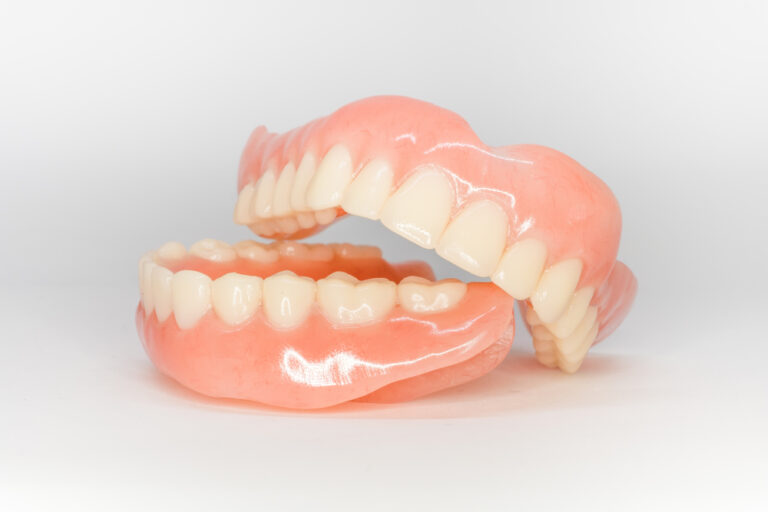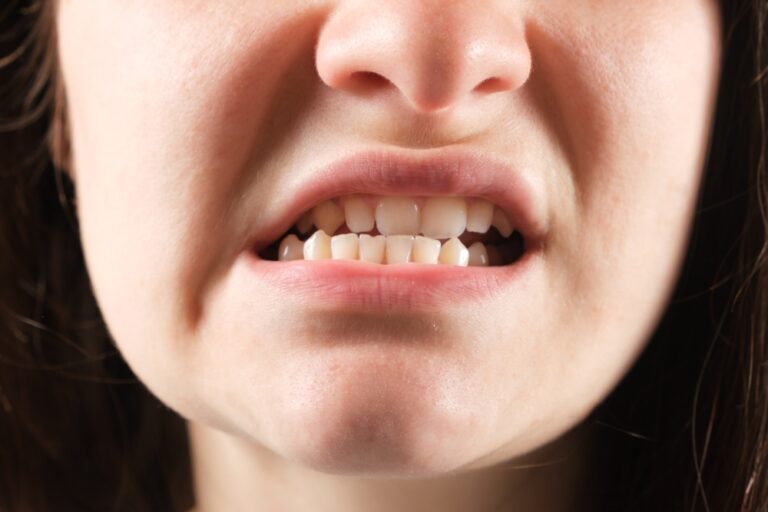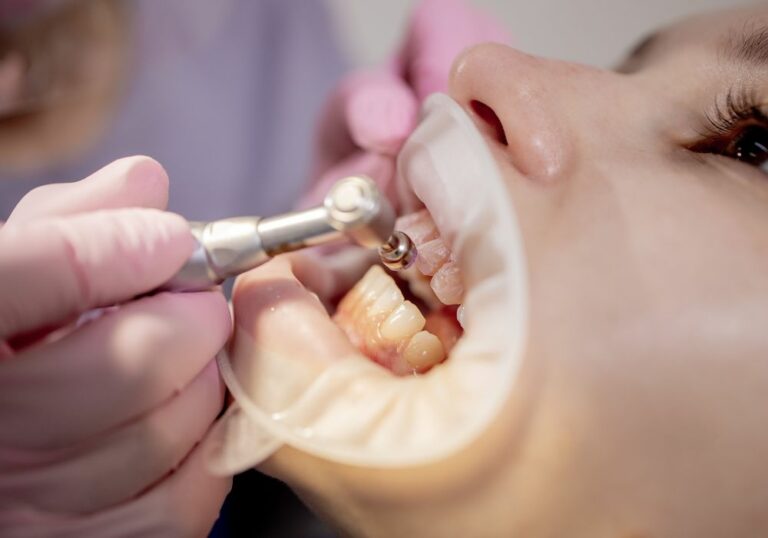If you have a long tooth that sticks out more than the others, you may be wondering if braces can push it further into the gums. This is a valid concern, as the last thing you want is to cause damage to your teeth or gums during orthodontic treatment. Fortunately, there is some good news: braces can be used to push a long tooth further into the gums, but it must be done carefully and with the right amount of force.
According to dental experts, pushing teeth further into the gums requires very little force, as little as 15-25 grams. However, if too much force is applied, there is a risk that the roots of the tooth could resorb, or be absorbed by the body, which could lead to serious dental problems. Therefore, it is important to have an experienced orthodontist who can properly adjust the braces and ensure that the right amount of force is being applied to your teeth.
If you are considering braces to correct a long tooth, it is important to have healthy gums before undergoing any orthodontic treatment. Invisalign braces and aligners may not be able to reverse gum recession, but they can offer some aesthetic improvements. With the right treatment plan and an experienced orthodontist, you can achieve a beautiful, healthy smile without causing any damage to your teeth or gums.
Understanding Dental Braces
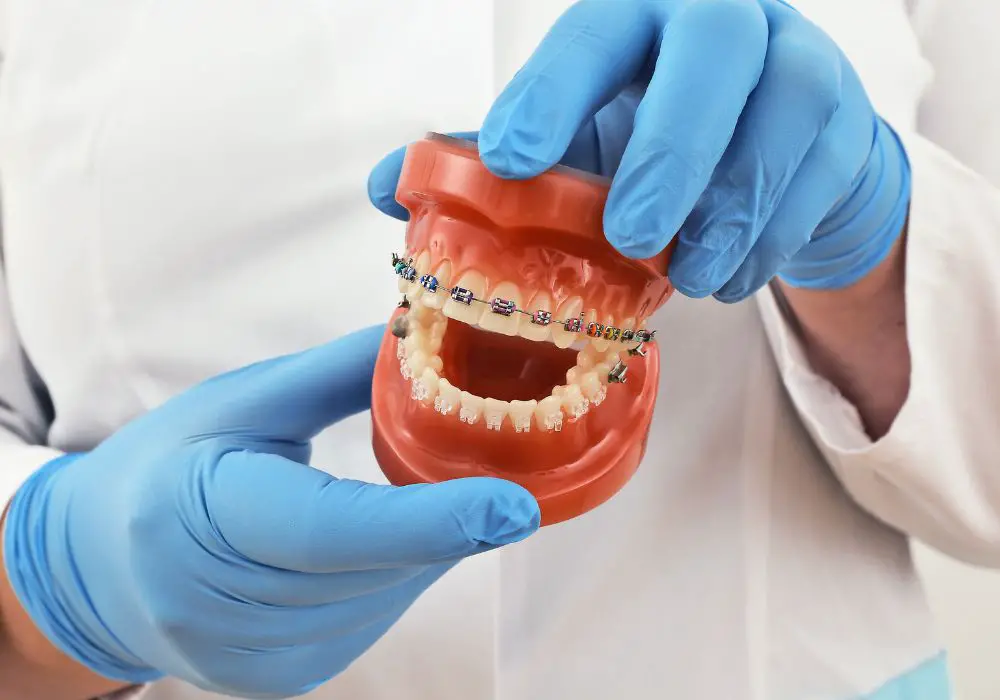
If you have crooked teeth or a misaligned jaw, your dentist or orthodontist may recommend dental braces. Braces are dental tools that help correct problems with your teeth, like crowding, crooked teeth, or teeth that are out of alignment. They work by applying gentle pressure to your teeth over time to move them into the correct position.
There are several types of braces available today, including traditional metal braces, ceramic braces, lingual braces, and clear aligners. Your dentist or orthodontist can help you choose the option that’s best for you based on your specific needs and preferences.
Traditional metal braces are the most common type of braces and are made of metal brackets and wires. Ceramic braces are similar to metal braces but are made of clear or tooth-colored materials, making them less noticeable. Lingual braces are placed on the back of your teeth, making them virtually invisible. Clear aligners, like Invisalign, are a series of clear plastic trays that fit over your teeth and gradually move them into the correct position.
No matter what type of braces you choose, it’s important to take good care of them to ensure the best possible results. This includes brushing and flossing regularly, avoiding hard or sticky foods, and attending regular check-ups with your dentist or orthodontist.
It’s also important to understand that braces can take time to work. Depending on your specific needs, you may need to wear braces for several months or even years. However, the end result is a straighter, healthier smile that can improve your overall oral health and self-confidence.
Long Tooth: Causes and Effects
If you have a long tooth, it can be caused by a variety of factors. Some of the most common causes include:
- Genetics: Some people are simply born with longer teeth than others.
- Grinding or clenching your teeth: This can cause your teeth to wear down unevenly, making some of them longer than others.
- Gum recession: As your gums recede, more of your tooth is exposed, making it appear longer.
- Trauma: If you suffer an injury to your tooth, it can become longer as a result.
Having a long tooth can cause a number of problems. For example, it can make it more difficult to clean your teeth properly, which can lead to tooth decay and gum disease. It can also affect your bite, causing discomfort and even pain. Additionally, a long tooth can affect your appearance, making you feel self-conscious about your smile.
Fortunately, braces can help to correct a long tooth. Orthodontic intrusion is a technique that can be used to push the tooth further into the gums, creating a more even appearance. Unlike other types of tooth movement, this technique uses very little force, making it a safe and effective option for most patients. However, it is important to work with a qualified orthodontist to ensure that your treatment is tailored to your individual needs.
Braces and Tooth Movement
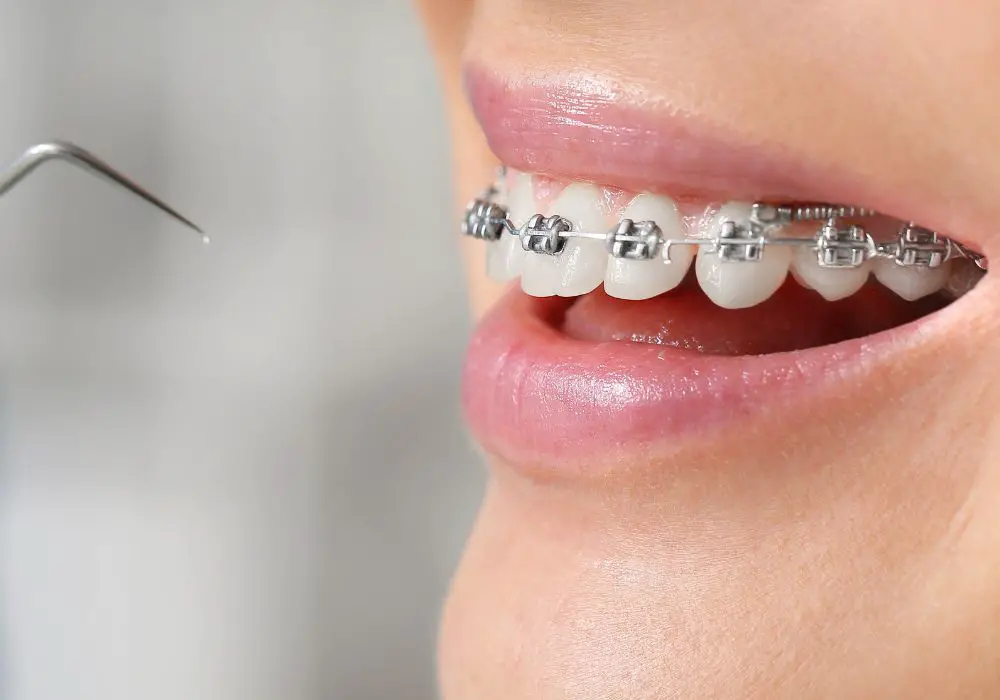
How Braces Work
Braces are orthodontic devices that are used to correct various dental issues, including crooked teeth, overcrowding, and bite problems. They work by applying gentle pressure to the teeth, which gradually moves them into their correct positions. Braces consist of brackets, wires, and elastics, and are typically worn for a period of 18 to 24 months.
The brackets are attached to the teeth using a special adhesive, and the wires are threaded through the brackets. The elastics are used to apply additional pressure to the teeth, and are changed periodically throughout the treatment process. As the teeth move, the bone around them also changes shape, allowing the teeth to settle into their new positions.
Braces and Long Tooth
If you have a long tooth that is causing issues with your bite or overall dental health, braces may be able to help. Braces can move teeth both horizontally and vertically, although horizontal tooth movement is much more common. If one of your teeth is longer than it should be or if you have a deep bite, whereby the upper teeth overlap the lower teeth, using braces to move the teeth vertically can correct these dental issues.
It is important to note that braces should only be used under the guidance of a qualified orthodontist. Attempting to move teeth without proper training can cause serious damage to the teeth and gums. Your orthodontist will be able to determine the best course of treatment based on your individual needs and goals.
In summary, braces can be an effective way to correct dental issues, including long teeth. By applying gentle pressure to the teeth, braces can gradually move them into their correct positions, improving both your dental health and overall appearance.
Potential Risks and Complications
When it comes to orthodontic treatments like braces, there are always potential risks and complications that you should be aware of. While braces are generally considered safe and effective, there are a few things that you should keep in mind if you’re considering this type of treatment.
One potential risk of braces is that they could push a long tooth further into the gums. This can happen if too much force is applied during the tooth movement process. However, it’s important to note that this is a relatively rare complication and can usually be avoided with proper treatment planning and monitoring.
Another potential complication of braces is that they can cause discomfort or pain, especially in the first few days or weeks after the braces are first applied. This is because the teeth are being moved into a new position, which can cause some soreness or sensitivity. However, this usually subsides fairly quickly and can be managed with over-the-counter pain medication if necessary.
In some cases, braces can also cause damage to the teeth or gums. This can happen if the brackets or wires are not properly placed or adjusted, or if the patient is not following proper oral hygiene practices. Some potential complications include:
- Tooth decay or gum disease
- Enamel erosion
- Root resorption
- Allergic reactions to the materials used in the braces
To minimize the risk of these complications, it’s important to work closely with your orthodontist and follow all of their instructions for care and maintenance of your braces. This includes brushing and flossing regularly, avoiding hard or sticky foods, and coming in for regular check-ups and adjustments.
Alternative Treatments for Long Tooth
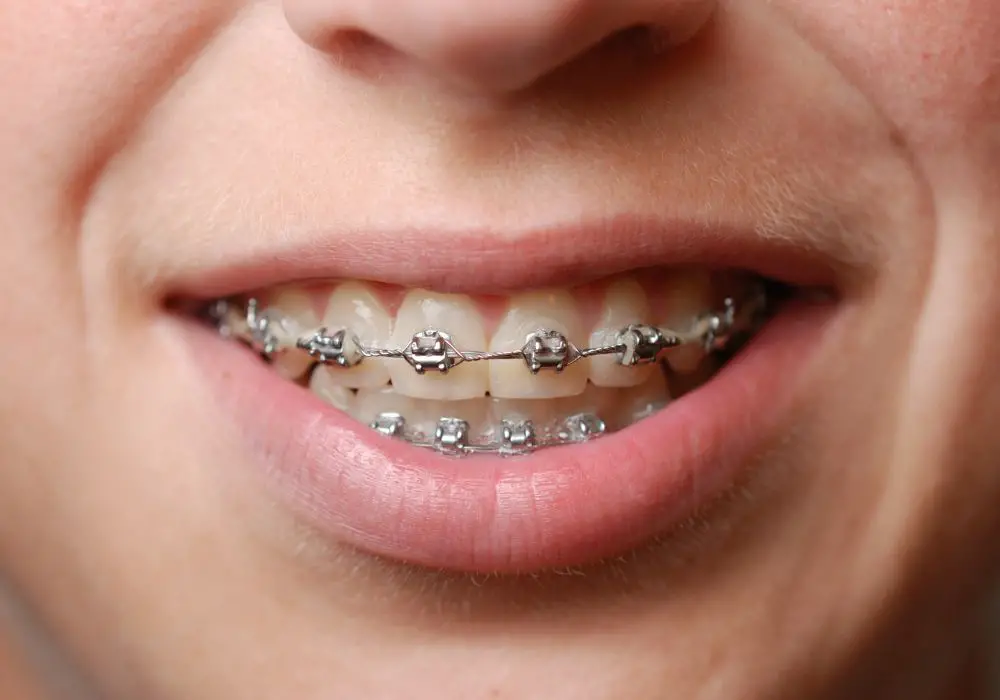
If you have a long tooth that is causing you discomfort or affecting your smile, you may be wondering if there are alternative treatments to braces. While braces are a common solution for misaligned teeth, there are other options that may be more suitable for your needs.
One alternative treatment for a long tooth is dental bonding. This involves applying a tooth-colored resin to the tooth and shaping it to match the surrounding teeth. This treatment is typically used for minor cosmetic issues, and may not be suitable for more severe cases.
Another option is dental veneers. Veneers are thin shells that are placed over the front of the teeth to improve their appearance. They can be used to correct a variety of issues, including long teeth, and are a popular choice for people looking to improve their smile.
If your long tooth is causing gum recession, you may need gum graft surgery. This involves taking tissue from another part of your mouth and attaching it to the affected area to cover the exposed root and prevent further recession.
It’s important to note that not all alternative treatments may be suitable for your specific case. It’s best to consult with your dentist to determine the best course of action for your individual needs.
Frequently Asked Questions
Can braces cause teeth to become loose?
Braces are designed to move teeth gradually, but it is possible for teeth to become loose during the process. This is because braces apply pressure to the teeth, which can cause them to shift. However, this is usually a temporary side effect and the teeth will eventually stabilize in their new position.
How do braces move teeth vertically?
Braces use a combination of brackets, wires, and elastics to apply gentle pressure to the teeth. The pressure causes the bone around the teeth to remodel, allowing the teeth to move vertically. The amount of force applied is carefully controlled to ensure that the teeth move at a safe and steady pace.
Can Invisalign push teeth up into gums?
Invisalign aligners are designed to apply gentle pressure to the teeth to move them into the desired position. While it is possible for aligners to push teeth up into the gums, this is rare and usually only occurs if the aligners are not worn correctly. It is important to follow your orthodontist’s instructions carefully to ensure that your treatment is effective and safe.
Can elongated tooth be fixed?
Yes, an elongated tooth can be fixed with braces or other orthodontic treatments. The orthodontist will use a combination of brackets, wires, and elastics to gradually move the tooth into the correct position. In some cases, the orthodontist may also need to remove a small amount of tooth enamel to create space for the tooth to move.
How far can a tooth be moved with braces?
The amount of movement that is possible with braces depends on a variety of factors, including the type of tooth, the age of the patient, and the severity of the misalignment. In general, teeth can be moved up to 1mm per month with braces. However, it is important to note that each case is unique and the orthodontist will develop a customized treatment plan for each patient.
Can a dentist push a tooth back into place?
If a tooth has been knocked out of position, a dentist may be able to push it back into place. However, this should only be done by a trained professional, as incorrect manipulation of the tooth can cause further damage. If you have a tooth that has been knocked out of position, it is important to seek dental care as soon as possible to prevent further complications.




